<p><br> <span class="small">July 09, 2025</span></p>
Making the case for generative AI in e-commerce
<p><b>Retailers need to modernize their e-commerce operations with generative AI. Here’s what they need to know to realize success in these endeavors.</b></p>
<p>Generative AI is rapidly changing the way people consume product information and make purchase decisions. Because of this, you might assume most retail businesses are hard at work applying generative AI to their e-commerce operations.</p> <p>However, <a href="https://my.idc.com/getdoc.jsp?containerId=US51558623" target="_blank" rel="noopener noreferrer">in an IDC global survey</a>, only 15% of retail businesses considered generative AI opportunities among their top priorities. This is in a landscape where global spending on generative AI is expected <a href="https://my.idc.com/getdoc.jsp?containerId=US51666724" target="_blank" rel="noopener noreferrer">to exceed $202 billion in 2028</a>. This represents a CAGR of 59.2% between 2023 and 2028—more than six times greater than the 9% CAGR for IT spending over the same period.<i></i></p> <p>From what we’ve seen among retail and e-commerce businesses, three key factors are preventing these organizations from beginning their generative AI journeys:</p> <ul> <li>A lack of awareness of use cases and their potential business impacts</li> <li>A misunderstanding of the key challenges</li> <li>The absence of a comprehensive adoption approach.</li> </ul> <p>Before embarking on any generative AI initiative, it’s essential to clarify what you expect to get out of the endeavor, be it higher customer satisfaction, greater revenues or operational cost savings.</p> <h4>The most compelling use cases of generative AI in e-commerce</h4> <p>Let’s first dive into some of the most popular cases of generative AI in e-commerce to understand their benefits and the biggest business impacts they can bring about.</p> <h5><span style="font-weight: normal;"><span class="text-bold-italic">1.</span> Generative AI-integrated conversational AI</span></h5> <p><b>Top business impacts</b></p>
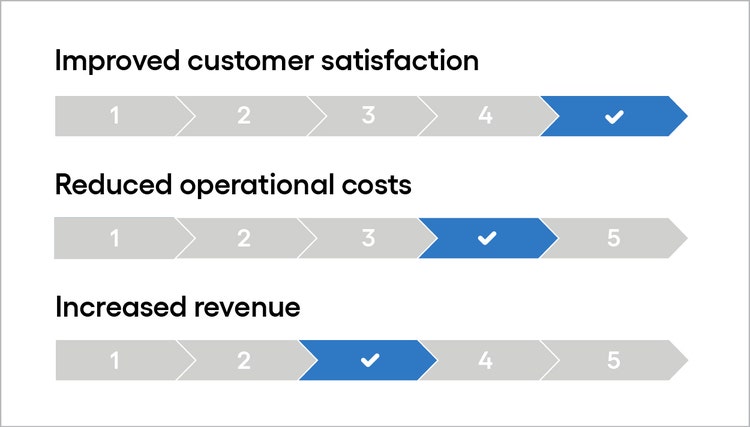
#
<p><span class="small">Figure 1</span></p> <p>Current virtual assistants work well when there is a structured chat around a pre-defined list of topics. However, advanced conversational AI, combined with generative AI, can significantly transform existing virtual assistant capabilities by providing features like summarization, information discovery and creative content generation and responses. This allows customers and customer service reps to have more meaningful exchanges with these tools.</p> <p><b>Benefits</b></p> <ul> <li>By relaying information via text summary, data visualization and content generation, conversational AI enables better query handling </li> <li>Proactive conversational capabilities result in improved user experience</li> <li>Task automation, with extended support for additional tasks, improves operational efficiency and reduces operational costs</li> </ul> <h5><span style="font-weight: normal;"><span class="text-bold-italic">2.</span> Content planning, creation and scaling</span></h5> <p><b>Top business impacts</b></p>
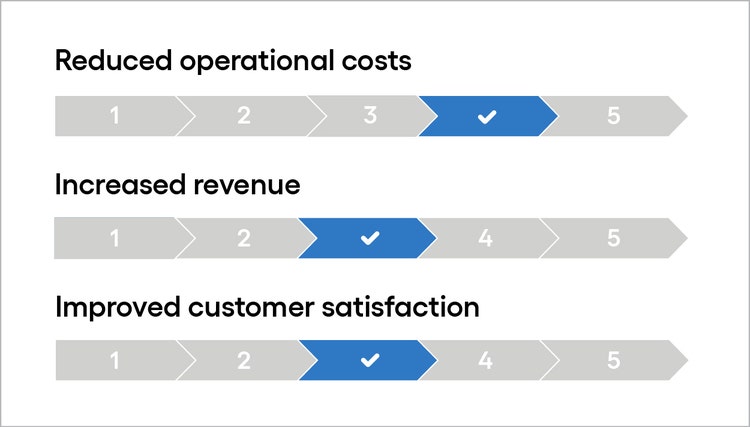
#
<p><span class="small">Figure 2</span></p> <p>Of any use case, this is one that retailers seem to understand the most. <a href="https://business.comcast.com/community/docs/default-source/default-document-library/us51558524.pdf?sfvrsn=7fbf4754\_1" target="_blank" rel="noopener noreferrer">According to IDC</a>, 40% of retailers will leverage generative AI-enabled content creation by 2027, helping them cut content management costs by 30%.</p> <p>Generative AI introduces benefits to the entire content lifecycle. Within the content planning phase, it can help marketers and creative teams generate ideas and foundational themes. In content creation, it can generate a draft of the text, audio, images, videos and 3D models for use in blogs, social media posts, website copy, marketing emails and ads. Generative AI can also help scale content by creating custom content for specific/targeted customers, producing iterative content such as social media posts or promotional messages, and optimizing content by updating language or regional preferences.</p> <p><b>Benefits</b></p> <ul> <li>Utilizing generative AI capabilities for content development allows creative teams to focus on high-value and complex tasks</li> <li>Applying generative AI to low-value and repetitive tasks enables organizations to significantly reduce costs, increase efficiency and improve content quality</li> <li>Tailored, personalized content can be produced at a faster rate</li> </ul> <h5><span style="font-weight: normal;"><span class="text-bold-italic">3.</span> Customer sentiment analysis</span></h5> <p><b>Top business impacts</b></p>
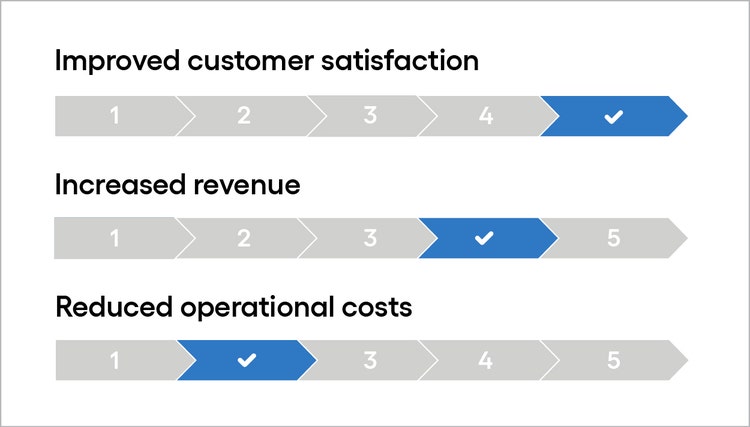
#
<p><span class="small">Figure 3</span></p> <p>A big issue retailers face is that while they want to maximize customer satisfaction, not every customer provides explicit feedback. Only by figuring out the overall sentiment toward their products or services can they proactively take corrective measures.</p> <p>Generative AI can be of immense help here. The technology can monitor social feeds, chat services and phone calls and provide a quantified customer sentiment score. These measures can also be grouped by customer type for better customer analysis.</p>

#
<p><span class="small">Figure 4</span></p> <p><b>Benefits</b></p> <ul> <li>By understanding customer sentiment, organizations can identify and respond to customer needs proactively</li> <li>A faster response to customer needs will also increase customer retention</li> <li>Higher customer retention will lower retention costs over time, allowing the organization to invest in customer acquisition and other business-critical initiatives</li> <li>Satisfied customers may help propagate positive sentiments to other existing customers and promote products/services to new customers</li> </ul> <h5><span style="font-weight: normal;"><span class="text-bold-italic">4.</span> Enhanced search capability</span></h5> <p><b>Top business impacts </b></p>
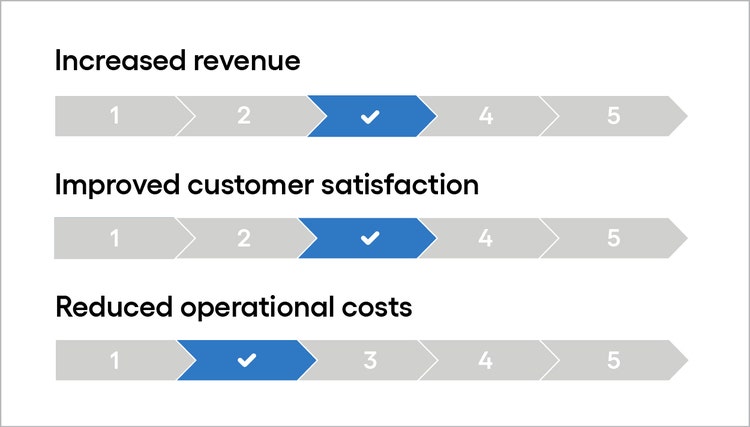
#
<p><span class="small">Figure 5</span></p> <p>On e-commerce channels (i.e., websites and mobile apps), generative AI-powered search features can generate more accurate search results and additional relevant information that can help customers make informed decisions or help them move ahead in the customer journey. A common example is Microsoft’s Bing capability that is now integrated into its Edge browser. Organizations can develop similar search capabilities on their e-commerce channels.</p>
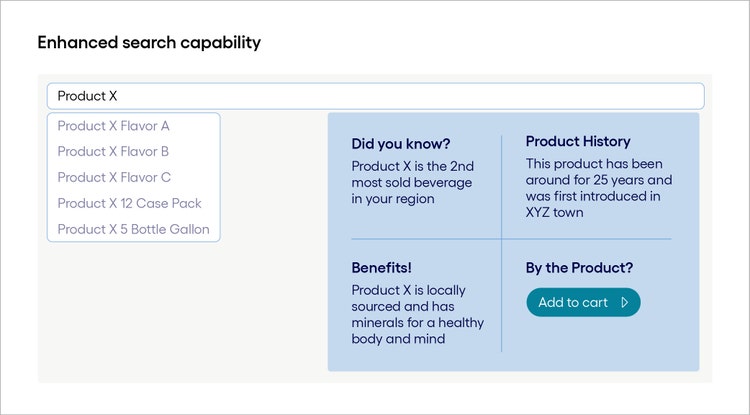
#
<p><span class="small">Figure 6</span></p> <p><b>Benefits</b></p> <ul> <li>An informed customer journey increases the likelihood of a purchase being made</li> <li>Additional data insights can help upsell/cross-sell products and services</li> <li>Investing in smart search capability increases the e-commerce conversion rate, which is a critical growth metric tracked by e-commerce organizations</li> </ul> <h4>Overcoming challenges of generative AI in e-commerce</h4> <p>All too often, retailers enter into a generative AI initiative without fully considering the challenges they might face. This can result in stakeholders getting frustrated and pulling funds from the program.</p> <p>Here is our assessment of the top challenges businesses face with generative AI implementations. These challenges can be daunting; however, in our work with dozens of large organizations around the world, the prevailing belief is that the benefits outweigh the associated risks.</p>
<h5><span style="font-weight: normal;"><span class="text-bold-italic">1.</span> Cost</span></h5> <p><i>Challenge scale: 10/10<br> </i>Cost is the biggest impediment to generative AI adoption. Investments are needed in technology, skills, data and infrastructure. Generative AI also requires vast computation and storage resources, which leads to a large carbon footprint.</p> <p>While costs cannot be totally avoided, they can be mitigated by planning out a roadmap for the initiative that encourages better informed decisions and avoidance of costly mistakes.</p> <h5><span style="font-weight: normal;"><span class="text-bold-italic">2.</span> Ethics and compliance </span></h5> <p><i>Challenge scale: 9/10<br> </i>The second biggest challenge is data and privacy. Many data owners (authors, artists, organizations) are now challenging LLM developers about the legality of using their data to generate AI outputs. The use of publicly available data to train LLMs can also raise privacy and compliance concerns, for example, with standards like GDPR. Organizations will need to address concerns around ethics by investing in responsible AI frameworks and ensuring compliance with the regulations.</p> <h5><span style="font-weight: normal;"><span class="text-bold-italic">3.</span> Skills gap</span></h5> <p><i>Challenge scale: 8/10</i><br> With generative AI still in the early adoption phase, there is a shortage of skilled professionals to handle various aspects of generative AI solution development, implementation and maintenance. Possible new roles like prompt engineers, AI auditors and AI ethicists may further aggravate the skills shortage. Organizations will need to invest in generative AI-specific capability development as part of the larger adoption framework.</p> <h5><span style="font-weight: normal;"><span class="text-bold-italic">4.</span> Training data</span></h5> <p><i>Challenge scale: 7/10</i><br> Most LLMs suffer from hallucination, in which they produce inaccurate information. The primary reason for this is a lack of breadth, variety, depth or industry-specific training data. There are a number of ways to mitigate this challenge, such as considering multiple LLMs (a generic LLM and an industry-specific LLM) or starting with a generic LLM and training it on industry/organization data.</p> <p>Organizations will need to carefully evaluate these options, understand the pros and cons, and adopt the ones that would work best for them within the given timeline and resources.</p> <h5><span style="font-weight: normal;"><span class="text-bold-italic">5.</span> System integration</span></h5> <p><i>Challenge scale: 7/10</i><br> Integrating generative AI solutions into the existing systems and technology architecture can be very challenging, especially if these systems are not built to handle advanced data-intensive solutions like generative AI. This challenge can be managed by performing a current-state assessment of the enterprise IT landscape, identifying areas that will need to be upgraded to support the generative AI roadmap and include them as prerequisites in the roadmap.</p> <h4>A comprehensive adoption approach to generative AI in e-commerce</h4> <p>To make generative AI journeys more manageable and successful, businesses need to organize the entire effort within a framework. Below is the generative AI adoption framework we use to guide organizations through the various aspects needed to succeed with such a complex journey. </p> <p><b>Adoption framework</b></p>
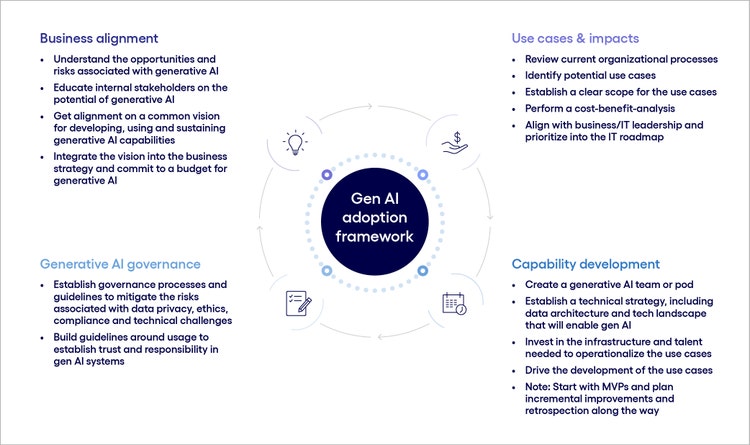
#
<p><span class="small">FIgure 7</span></p> <p>Given the huge potential benefits of adopting generative AI, e-commerce leaders would greatly benefit from identifying potential use cases and incorporating them into their technology roadmaps, starting with simple solutions. The sooner this is done, the faster businesses will see the resulting business impacts—and realize competitive advantage in the marketplace.</p> <p><a href="https://www.cognizant.com/us/en/services/consulting" target="_blank" rel="noopener noreferrer"><i>Cognizant Consulting</i></a><i> has worked with dozens of large organizations globally, offering comprehensive solutions through all phases of the generative AI adoption framework, from initial stages of alignment and assessment, through use case identification and roadmap development.<br> </i></p>
<p>Jitesh is a Senior Program and Product Leader helping our consumer clients optimize and transform digital footprints, UX and ecommerce using technology. He drives product strategy, customer success and thought leadership in digital solutions and generative AI.</p>


